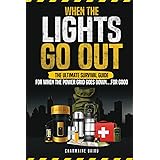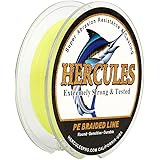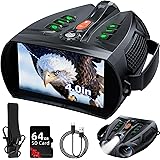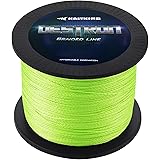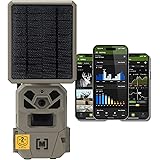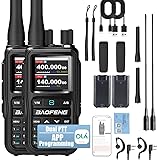Effective Winter Survival Gear: Staying Warm in Extreme Cold
Approximately 1,300 deaths are attributed to cold exposure annually in the United States. Many of these fatalities occur due to insufficient preparation. The video above highlights a crucial piece of equipment used by US Rangers. This small item is invaluable for winter survival. Consequently, its inclusion in any cold-weather kit is strongly advised. Effective winter survival gear extends beyond basic clothing. Comprehensive strategies are vital for staying warm in extreme conditions.
The Essential Role of Portable Chemical Heat Packs
Portable chemical heat packs are a cornerstone of effective winter survival gear. They are small, lightweight, and incredibly efficient. These packs are designed to generate warmth on demand. Hand warmers and foot warmers are common variants. Their utility extends to various body parts. Often, they are placed inside gloves or boots. Furthermore, a heat pack can significantly warm a sleeping bag. This raises the internal temperature by several degrees. The packs operate through a simple chemical reaction. Iron powder oxidizes when exposed to air. This process releases a steady stream of heat. Consequently, constant thermal support is provided. They are considered a vital component of a comprehensive cold-weather strategy.
Different types of heat packs are readily available. Air-activated disposable warmers are most common. These offer reliable, single-use warmth for several hours. Reusable gel packs are another option. These are typically activated by flexing a metal disc. They can be reset by boiling them in water. Each type has distinct advantages. Disposable packs are favored for sustained use. Reusable packs are beneficial for repeated, shorter applications. Selection should be based on specific needs. Proper storage is also important. Unopened packs maintain efficacy for years. Their inclusion greatly enhances personal safety. Moreover, they are easy to deploy during critical moments.
Beyond Insulation: Comprehensive Warmth Strategies
Thick clothing alone often isn’t enough to prevent hypothermia. A multi-layered approach to dressing is therefore necessary. This strategy involves several distinct layers. A base layer wicks moisture away from the skin. Merino wool or synthetic fabrics are commonly utilized. Next, a mid-layer provides insulation. Fleece or down jackets serve this purpose well. Finally, an outer shell protects against wind and precipitation. This layer should be waterproof and breathable. Each layer contributes to overall warmth. Air pockets between layers trap heat effectively. Consequently, core body temperature is maintained. Strategic layering is a fundamental principle. This method is taught in military survival training.
Understanding heat loss mechanisms is also critical. Heat is lost through conduction, convection, radiation, and evaporation. Conduction occurs when heat transfers directly to colder objects. Sitting on cold ground is a prime example. Convection involves heat loss to moving air or water. Wind chill significantly increases this effect. Radiation is the emission of body heat into the environment. Evaporation of sweat or wet clothing cools the body rapidly. Measures are taken to mitigate each mechanism. An insulated sleeping pad prevents conduction. Windproof outer layers combat convection. Covering exposed skin reduces radiant heat loss. Staying dry is paramount to preventing evaporation. These principles guide all cold-weather preparedness.
Principles of Cold Weather Survival and Energy Management
Maintaining high energy levels is vital for survival in cold environments. The body expends considerable energy to stay warm. Sufficient caloric intake is therefore essential. Foods high in fat and protein are recommended. These provide sustained energy release. Hydration is equally important. Dehydration impairs the body’s ability to regulate temperature. Hot drinks can also provide internal warmth. Consequently, frequent, small meals are advised. This prevents energy crashes. Proper nutrition supports metabolic heat production. It is a critical, often overlooked aspect. Rangers are trained to manage their energy reserves carefully. This ensures sustained operational capability.
Activity levels also require careful management. Overexertion leads to sweating. Wet clothing drastically reduces insulation properties. This significantly increases heat loss. Periods of high activity should be followed by rest. Clothing adjustments are made as needed. Layers are shed during strenuous effort. They are redonned during breaks. This prevents excessive sweating. Maintaining dryness is a top priority. Sheltering from wind is also paramount. A properly constructed shelter reduces heat loss. It provides a refuge from the elements. These methods collectively enhance survival chances. They are integrated into military survival protocols.
Building a Comprehensive Winter Survival Kit
A well-prepared winter survival kit is a personal safeguard. It includes more than just heat packs. Essential items are carefully chosen. These items address various survival needs. A reliable navigation system is indispensable. A compass and map are always carried. Headlamps or flashlights provide crucial visibility. Spare batteries are also included. Fire-starting materials are critical for warmth and cooking. Waterproof matches or a ferro rod are common choices. A multi-tool offers versatile functionality. First-aid supplies address injuries and ailments. Emergency rations provide sustenance. Consequently, careful selection is key. Every item serves a specific purpose.
Further additions enhance overall preparedness. A sturdy knife is always useful. Cordage, like paracord, has countless applications. A signaling mirror or whistle aids in rescue. A durable shelter tarp can be improvised. A small amount of cash can be helpful. Water purification tablets ensure safe drinking water. These items collectively form a robust kit. This preparedness mindset is instilled in US Rangers. Their training emphasizes self-reliance and foresight. Therefore, building a complete kit is a wise investment. It significantly improves safety in cold conditions. This is fundamental for winter survival gear planning.


